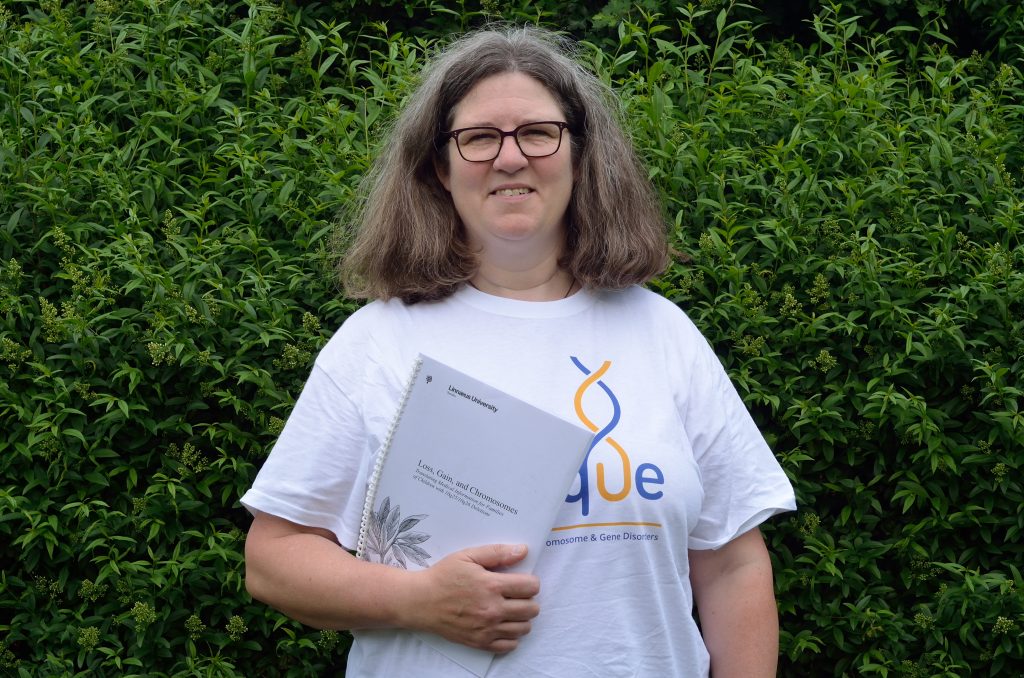
We’re pleased to have our first chromosome disorder information guide available in Swedish. Thanks to Kristina Runyeon-Odeberg for help with the translation. Read her story below of how she got involved.
Hello, Unique families!
My name is Kristina Runyeon-Odeberg, and I am one of around 7,000 people who populate the small village of Dalby, situated about ten miles ESE of Lund, Sweden.
Back in December of 2018, I was pursuing an MA in English and struggling with a subject for my thesis. I needed a text in English that was about six thousand words long which I could translate into Swedish and study. There were a set of three conditions, the first of which was that the text had to be a non-fiction text. The second condition was that the text should not already have been translated, and the third was that I needed to find an area of study to highlight.
I have a good friend who is a minister in the Church of Sweden, and she has friends who have a daughter with a 10q26 deletion. She also told me that the only written information the Swedish parents receive when they are informed of their child’s diagnosis is Unique’s 10q25/10q26 Deletions brochure – in English. Many Swedes are good at speaking and understanding English on a daily basis, but when it comes to reading or writing, that might be a whole different story. With the added variable of stress, written information might be even harder to digest.
I found the Unique site, downloaded the information guide and looked at the scope, found Claire Andersen’s name on the site, and wrote to her. She was very helpful and even found a person who could fact check the translation. I asked and received her permission to publish examples from the source and target text in my thesis. My teachers gave me the green light to use only part of the text for the translation study. It did not take me long to realize I could focus on the area of medical terminology and how terms differ between English and Swedish. I also added readability after a while, as medical information depends on being readable.
The translation of the guide was very educational and inspiring. I was touched by the many testimonials. Here were families who had overcome difficulties and wanted to tell the story. I can only use my imagination, but I can partly relate. My youngest son received a rare diagnosis at age 8 in 2012, although it was far from as rare as a 10q25/26 deletion. For those who are curious, he will celebrate his 16th birthday next month; by and large, he is doing fantastic. From this experience, I knew what it could be like feeling overwhelmed and wanted to do something for families in a vaguely similar position. This was perfect for me; it was close enough to home that I could easily find the motivation, but not so close to home that I would be overwhelmed again.
I defended my thesis during the summer of 2019, but a great deal of that autumn went into revisions of it. Another hurdle I had to face was that the first fact checker fell ill. Claire was very helpful in finding two other experts who would help, but the latter half of the information guide still remained. In the spring of 2020, I got the final comments and sent the complete long and short version of the guide back to Claire…only to find out that Unique was sadly affected by the Covid-19 pandemic and most of the team were furloughed to save vital funds for the charity.
Early in September, Claire got back to me with the wonderful news that she was back, and that the guides were complete. It has been a true privilege translating the first Swedish guide in its long and short versions, and I hope more will follow!
Best wishes,
Kristina
Photo credit: HANS ODEBERG
See our chromosome and gene disorder guides at https://www.rarechromo.org/disorder-guides/